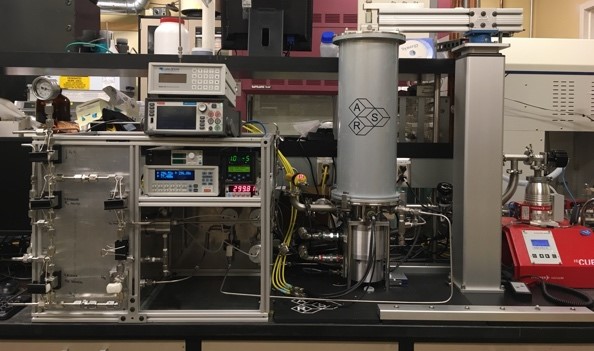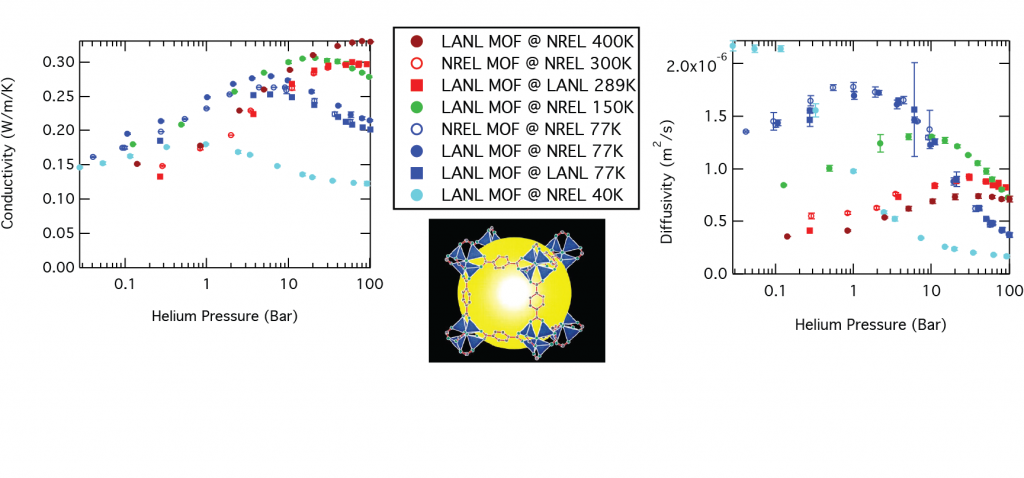Thermal Conductivity
Category
Characterization Tools
Description
In hydrogen storage systems, thermal management is an essential component of tank design. This state- of-the-art thermal conductivity instrument has a unique range of capabilities. The experimental apparatus designed and built by National Renewable Energy Laboratory (NREL) scientists allows the measurements of the thermal conductivity, diffusivity, and volumetric heat capacity of powder materials for pressures ranging from ~20 mbar to 80 bar; temperatures ranging from 40 K to 300 K; and gases such as Ar, He, and H2. To this end, the transient plane source method, as described by Gustafsson, is employed.
- Utilizes, H2, He (other gases possible) from vacuum to 80 bar
- Has an excellent temperature range: 40 K to 300 K
- Sample types include solids, compressed pucks, and powder
Figures

Figure 1. Thermal conductivity instrument

Figure 2. Thermal conductivity and diffusivity of Zn4(O)(BDC)3, MOF-5, in He gas as a function of He pressure at different temperatures measured at NREL and Los Alamos National Laboratory. The schematic shows MOF-5 and that there is one cavity in the framework for its interaction with H2. Note non-monotonic behavior under He at various temperatures and pressures.
References
S. Gustafsson, Review of Scientific Instruments 62 (1991): 797
